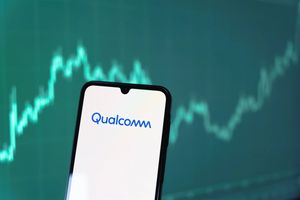
The global industrial metals market is currently experiencing a dramatic and multifaceted demand shift, with copper emerging as the undeniable bellwether of this transformation. Driven primarily by the accelerating global energy transition, coupled with significant technological advancements and evolving macroeconomic landscapes, the demand for "Dr. Copper" is surging at an unprecedented rate. This robust appetite for the versatile metal is creating a complex market dynamic, characterized by rapidly escalating consumption, the specter of impending supply deficits, and consequently, heightened price volatility that is reshaping global industrial production and investment strategies.
As of November 7, 2025, the implications are immediate and profound. Projections indicate a substantial increase in copper consumption over the coming decade, largely fueled by the electrification of transportation, the build-out of renewable energy infrastructure, and the expansion of smart grids. This structural shift is putting immense pressure on existing supply chains, leading to a tight market where supply struggles to keep pace with an insatiable demand. The resulting imbalance is not only driving copper prices to record highs but also signaling potential bottlenecks for the very industries relying on this critical metal for their ambitious decarbonization goals.
The Electrification Epoch: Unpacking Copper's Demand Surge
The current surge in copper demand is not a fleeting trend but a fundamental recalibration driven by several powerful forces. At its core, the global energy transition stands as the most significant catalyst. The widespread adoption of electric vehicles (EVs), for instance, demands more than double the amount of copper compared to traditional internal combustion engine vehicles, with demand from this sector alone projected to grow at a compound annual growth rate (CAGR) of 13.7%. Similarly, the build-out of renewable energy systems—solar panels and wind turbines—are highly copper-intensive, with demand from these technologies expected to grow by 7%. Furthermore, the modernization and expansion of global electricity grids to integrate decentralized renewable sources and support new high-capacity transmission lines require vast quantities of copper, an area projected to see a 19% increase in demand.
Beyond green technologies, technological advancements are also playing a crucial role. The burgeoning artificial intelligence (AI) sector and the relentless construction of new data centers are emerging as powerful, albeit newer, drivers of copper consumption. Each data center can demand up to 30,000 tonnes of copper, showcasing the scale of this new demand vector. The rollout of 5G networks and continuous innovation in advanced electronics further contribute to the consistent need for copper. On the macroeconomic front, traditional industrial applications like general manufacturing and construction, while growing modestly (around 0.5%), still form a substantial base. China (SSE: 601398), accounting for approximately 40% of global copper demand, remains a pivotal player, though its economic transition is causing divergent impacts. Emerging markets like India (NSE: RELIANCE), with rapid industrial growth, are also becoming significant demand drivers.
The timeline leading to this moment has been a gradual acceleration. Over the past few years, the increasing global commitment to climate targets, bolstered by government incentives and corporate ESG initiatives, has steadily amplified the need for electrification infrastructure. Key stakeholders involved include major mining companies like BHP Group (ASX: BHP), Rio Tinto (ASX: RIO), and Freeport-McMoRan (NYSE: FCX), who are at the forefront of copper extraction. On the demand side, electric vehicle manufacturers such as Tesla (NASDAQ: TSLA) and BYD (HKG: 1211), renewable energy developers, and national grid operators are the primary consumers. Initial market reactions have seen copper prices experience significant upward pressure and volatility throughout 2025, with some analysts forecasting potential record highs. While recent fluctuations have occurred due to factors like a stronger U.S. dollar and short-term demand uncertainties, the underlying structural drivers point to a robust long-term bullish outlook.
Market Movers: Identifying the Winners and Losers
The seismic shifts in copper demand are creating a clear delineation between potential winners and losers across the industrial landscape. Mining companies with significant copper assets are poised for substantial gains. Giants like BHP Group (ASX: BHP), Rio Tinto (ASX: RIO), and Freeport-McMoRan (NYSE: FCX), which control vast copper reserves and production capabilities, stand to benefit immensely from sustained high prices and robust demand. Their profitability is directly tied to the commodity's value, and the current market conditions present a lucrative environment for expansion and increased revenue. Companies engaged in copper exploration and development, particularly those with projects nearing production, could also see their valuations soar as the scarcity deepens.
Beyond the raw material producers, manufacturers of electrical components and infrastructure are also positioned favorably. Companies that produce copper wiring, cables, transformers, and other electrical equipment essential for EVs, renewable energy grids, and data centers will experience a surge in orders. This includes firms specializing in advanced power transmission solutions and smart grid technologies. Furthermore, companies innovating in copper recycling and sustainable sourcing may also emerge as long-term winners. As primary supply struggles to meet demand, the economic viability and environmental appeal of recycled copper will increase, favoring companies with advanced recycling capabilities.
Conversely, several sectors and companies could face significant challenges. Industries heavily reliant on copper as a primary input for products with thin margins may struggle with persistently high prices. This includes some segments of traditional manufacturing and construction, where the ability to absorb increased material costs or pass them on to consumers is limited. Small and medium-sized enterprises (SMEs) within these sectors, lacking the purchasing power or hedging capabilities of larger corporations, could be particularly vulnerable. Additionally, companies that have not adequately diversified their supply chains or invested in material efficiency could find themselves at a competitive disadvantage. While the push for electrification benefits many, firms that are slow to adapt their product lines or operational strategies to accommodate the new copper-intensive reality may lag behind.
Wider Significance: A New Industrial Revolution
The current demand shifts in industrial metals, particularly copper, represent more than just a market fluctuation; they signify a profound acceleration of a new industrial revolution. This event fits squarely into broader industry trends centered on decarbonization, digitalization, and electrification. Copper's pivotal role underscores the global commitment to transitioning away from fossil fuels, with every electric vehicle, solar panel, and wind turbine serving as a testament to this shift. The event highlights the tangible resource implications of achieving ambitious climate goals, demonstrating that the "green" future is inherently metal-intensive.
The potential ripple effects are far-reaching. Competitors within the mining sector are racing to secure new deposits and expand existing operations, leading to increased M&A activity and exploration spending. Partners in the supply chain, from refiners to component manufacturers, are scrambling to scale up production and optimize logistics to meet the burgeoning demand. Governments worldwide are recognizing the strategic importance of critical minerals, leading to potential regulatory and policy implications. We could see increased governmental support for domestic mining, streamlined permitting processes for new projects, and even resource nationalism as countries seek to secure their supply of essential metals. Trade policies, such as the proposed U.S. tariff on copper imports in 2025, indicate a growing trend towards safeguarding national interests in critical material supply, which could introduce further market volatility.
Historically, periods of rapid industrialization, such as the late 19th and early 20th centuries, saw similar surges in demand for foundational metals like iron and steel. The current situation with copper draws parallels to these eras, but with a distinct "green" imperative. Unlike past industrial revolutions driven by fossil fuels, this one is powered by the very materials needed to move beyond them. The challenge, however, is that new mine development is a notoriously slow process, often taking a decade from discovery to significant output, while demand is accelerating at an unprecedented pace. This mismatch is a critical difference from historical precedents and forms the crux of the current market tension.
What Comes Next: Navigating a Metal-Intensive Future
Looking ahead, the industrial metals market, particularly for copper, is poised for a period of sustained transformation and potential volatility. In the short term, the market will likely grapple with continued price fluctuations driven by macroeconomic data, geopolitical developments, and any new supply disruptions. Investors and industrial consumers should anticipate ongoing tightness in refined copper markets, potentially exacerbated by inventory drawdowns and logistical challenges. Strategic pivots will be crucial for companies across the value chain. Mining firms will need to accelerate exploration and development, while manufacturers must explore material substitution, design optimization to reduce copper content, and robust supply chain diversification to mitigate risks.
Long-term possibilities point towards a structural rebalancing, albeit one that will take time. The substantial investment flowing into the sector is expected to eventually bring new supply online, but this will likely not occur before significant deficits materialize. S&P Global Market Intelligence forecasts that copper demand could outpace supply by roughly 50 Mt per year by 2035, underscoring the severity of the projected shortfall. This creates significant market opportunities for innovators in sustainable mining practices, advanced recycling technologies, and alternative material research. Companies that can efficiently extract, process, or reclaim copper with a reduced environmental footprint will gain a significant competitive edge.
Potential scenarios range from a "green tech boom" where high copper prices accelerate innovation in material efficiency and recycling, to a "resource crunch" where scarcity significantly slows the pace of global decarbonization efforts. A more balanced outcome might see a combination of new supply, technological advancements, and policy interventions gradually stabilize the market. The key challenge lies in bridging the gap between rapidly accelerating demand and the inherently slow pace of new supply development. This will necessitate unprecedented collaboration between governments, industry, and financial institutions to ensure a stable and sustainable supply of this critical metal.
Wrap-Up: Copper's Enduring Significance in a Transforming World
In summary, the industrial metals market, particularly for copper, is undergoing a profound and irreversible demand shift, primarily driven by the global energy transition and technological advancements. This "green revolution" for copper is characterized by accelerating demand growth from electric vehicles, renewable energy infrastructure, and smart grids, leading to an increasingly tight market and significant price volatility. While traditional industrial uses remain a foundational demand component, the exponential growth in electrification-related applications is reshaping the entire landscape. The immediate implications include looming supply deficits that could reach millions of tonnes in the coming decade, posing a significant challenge to global industrial production and the ambitious targets for decarbonization.
Moving forward, the market will remain highly sensitive to both supply-side developments and demand-side innovations. Investors should closely monitor mining project pipelines, geopolitical stability in key producing regions, and advancements in copper recycling technologies. The long-term outlook for copper remains bullish, underpinned by the indispensable role it plays in the transition to a sustainable future. However, the path will likely be marked by periods of price volatility as the market seeks equilibrium between surging demand and constrained supply. The enduring significance of copper as a foundational material for a modern, electrified world cannot be overstated, making it a critical watchpoint for investors and policymakers alike in the months and years to come.
This content is intended for informational purposes only and is not financial advice





